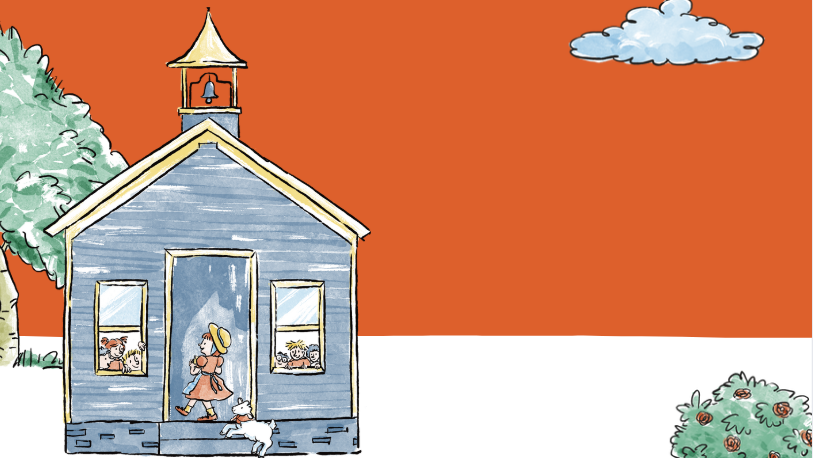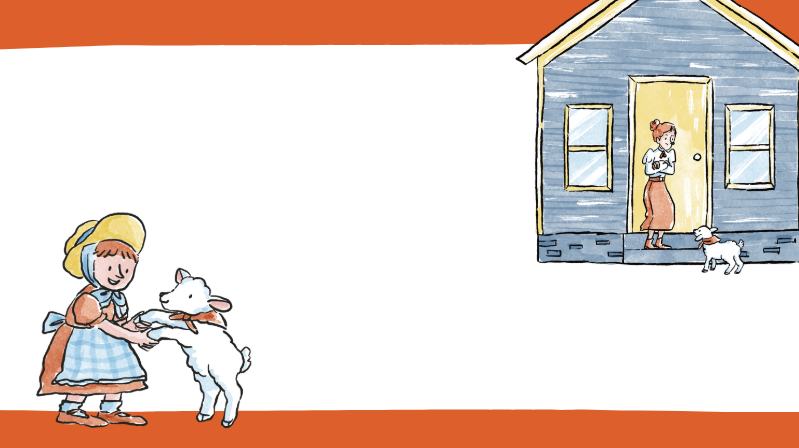|
Getting your Trinity Audio player ready...
|
“Mary Had a Little Lamb” is a charming and beloved children’s rhyme written by the American author Sarah Josepha Buell Hale (1788–1879). Although the poem was composed earlier, it was first published in May 1830. Unlike many other children’s rhymes, this poem is not based on real-life events or historical context. However, it is believed that the poet drew inspiration from a young girl named Mary Sawyer, who, encouraged by her brother, once brought her pet lamb to school.
“Mary Had a Little Lamb”– Theme
The poem tells the story of a young girl named Mary and her adorable pet lamb. The lyrics beautifully capture the deep love and emotional bond between Mary and her lamb. Themes of love, excitement, and attachment are central to the poem. It highlights the strong connection between the girl and her pet, as the lamb’s affection leads it to follow Mary everywhere, even to school. The presence of the lamb at school brings joy and wonder to the other children, who are amazed by the lamb’s devotion to Mary.

Poem “Mary Had a Little Lamb”
Mary had a little lamb,
Little lamb, little lamb,
Mary had a little lamb,
Its fleece was white as snow.
And everywhere that Mary went,
Mary went, Mary went,
Everywhere that Mary went,
The lamb was sure to go.
It followed her to school one day,
School one day, school one day,
It followed her to school one day,
Which was against the rules.
It made the children laugh and play,
Laugh and play, laugh and play,
It made the children laugh and play,
To see a lamb at school.
And so the teacher turned it out,
Turned it out, turned it out,
And so the teacher turned it out,
But still it lingered near.
And waited patiently about,
Till Mary did appear.
“Why does the lamb love Mary so?”
The eager children cry.



“Mary Had a Little Lamb”– Summary
The poem revolves around a young girl named Mary and her little pet lamb, whose fleece is as white as snow. The lamb is deeply attached to Mary and follows her wherever she goes. One day, as Mary prepares for school, the lamb insists on accompanying her, despite Mary’s protests that it’s against school rules. Reluctantly, Mary leaves the lamb at home, but the lamb secretly follows her to school.
When Mary arrives at school, she is surprised to see her lamb there. While she feels uneasy about the situation, the other children are delighted and play joyfully with the lamb. The teacher, however, tries to send the lamb away, but it lingers nearby, patiently waiting for Mary until school ends. The children, curious about the lamb’s devotion, ask why it loves Mary so much. The teacher explains that it’s because of Mary’s unwavering love and care for her pet.
Kindness and Loyalty: The Lesson of Mary’s Lamb” – Moral
The poem teaches us that life doesn’t always go as planned, and sometimes unexpected situations arise. It also emphasizes the profound bond between humans and animals, showcasing how pets can provide unconditional love and emotional support. While such moments may initially cause embarrassment, they should ultimately fill us with pride and wonder at the depth of love between an owner and their pet. The poem encourages kindness toward animals and celebrates the joy they bring into our lives.




